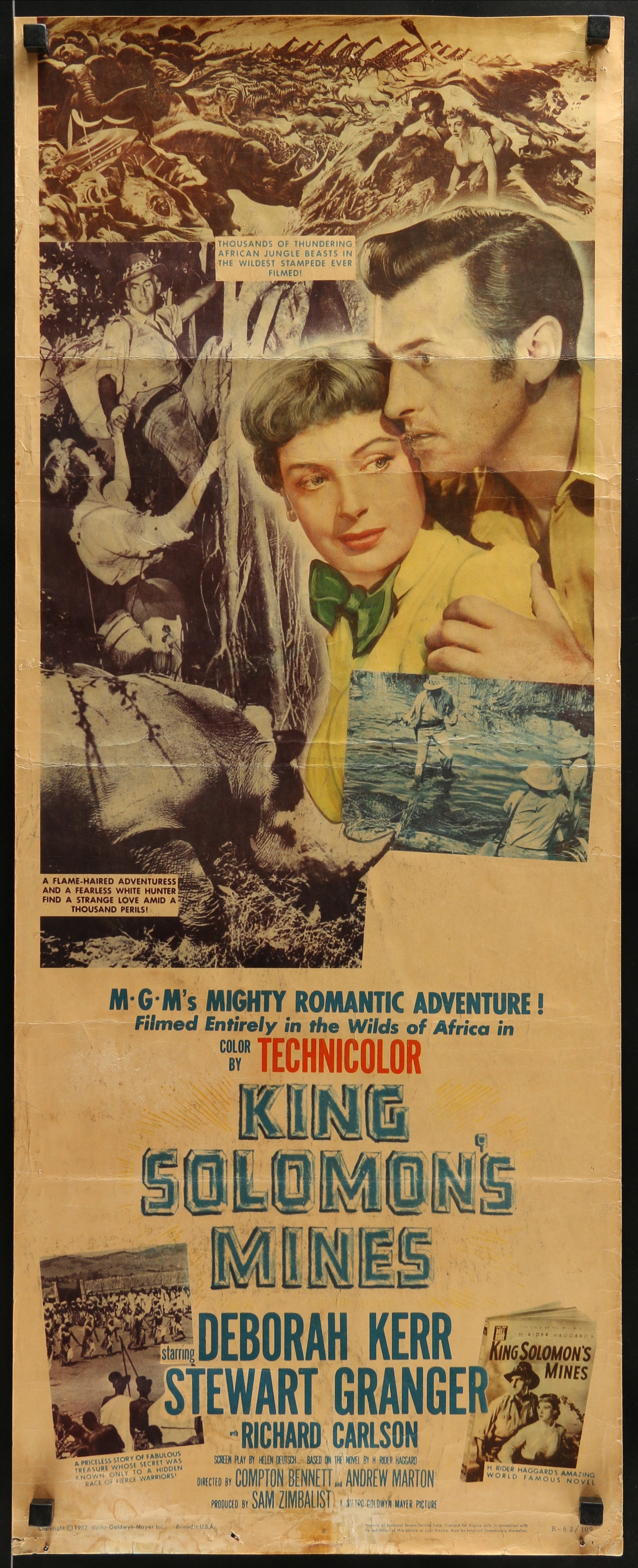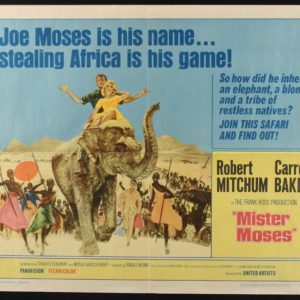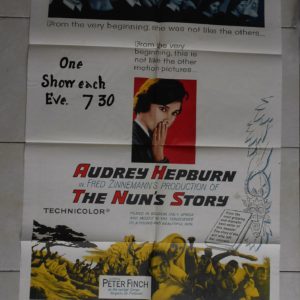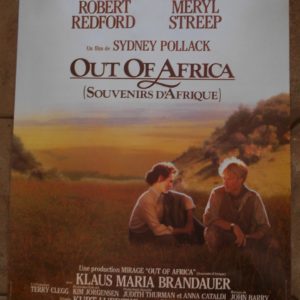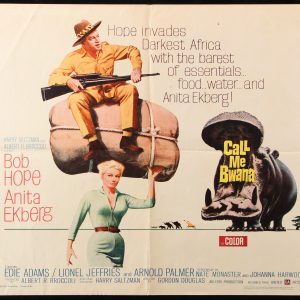Description
King Solomon’s Mines is a 1950 Technicolor adventure film, the second of five film adaptations of the 1885 novel of the same name by Henry Rider Haggard. It stars Deborah Kerr, Stewart Granger and Richard Carlson. It was adapted by Helen Deutsch, directed by Compton Bennett and Andrew Marton and released by Metro-Goldwyn-Mayer.
Plot
Allan Quatermain (Stewart Granger), an experienced hunter and guide, reluctantly agrees to help Elizabeth Curtis (Deborah Kerr) and her brother John Goode (Richard Carlson) search for her husband, who disappeared in the unexplored African interior while searching for the legendary titular mines. They have a copy of the map he used. A tall, mysterious native, Umbopa (Siriaque), joins the safari. Allan has no use for women on a safari, but during the long and grueling journey, he and Elizabeth begin to fall in love.
The party encounters Van Brun (Hugo Haas), a lone white man living with a tribe. They learn that he met Curtis. However, when Allan recognizes him as a fugitive who cannot afford to let them go, they take him hostage to leave the village safely. Van Brun tries to shoot Allan, killing his faithful right-hand man Khiva (Kimursi), instead. Allan dispatches Van Brun and the party flees from the angry villagers.
When they finally reach the region where the mines are supposed to be, they are met by people who resemble Umbopa. They discover that their companion is royalty; he has returned to attempt to dethrone the evil King Twala (Baziga). Umbopa leaves with his supporters, while Allan, Elizabeth and John travel to a tense meeting with Twala. With his last rifle bullet, John kills a would-be attacker, temporarily quelling the natives.
The king’s advisor, Gagool (Sekaryongo), communicates that they have seen Curtis and leads them to a cave that contains a trove of jewels and in which they find the skeletal remains of Elizabeth’s husband. While they are distracted by this discovery, Gagool sneaks away and triggers a booby trap that seals them inside the cave. Leaving the jewels behind, they find a way out through an underground stream and return to the settlement, just as Umbopa and his followers arrive.
Umbopa’s people have an unusual method of deciding the kingship. The two claimants duel to the death. Despite cheating by one of Twala’s men, Umbopa wins. Afterwards, he provides an escort for his friends’ return trip.
Cast
Deborah Kerr as Elizabeth Curtis
Stewart Granger as Allan Quatermain
Richard Carlson as John Goode
Hugo Haas as Van Brun a.k.a. Smith
Lowell Gilmore as Eric Masters, District Commissioner
Kimursi as Khiva, Chief Bearer in Red Fez (credited as Kimursi of the Kipsigi Tribe)
Siriaque as Umbopa, Tall Prince-in-Exile
Sekaryongo as Chief Gagool, Witch-like Guide to Diamond Mines
Baziga as King Twala, Usurper (credited as Baziga of the Watussi Tribe)
Production
MGM typically made one or two big “overseas” spectacles a year around this time. When Quo Vadis was postponed, it was decided to film King Solomon’s Mines on location in Africa. Production equipment was trucked in, with a total travel distance of over 70,000 miles (110,000 km), using a convoy of Dodge trucks.
Adaptation
Like virtually all film versions, this also changes Haggard’s plot to include a female lead. But it strays even further from the novel than the 1937 British adaptation King Solomon’s Mines. There are several African characters in the book, particularly Umbopa, a king in disguise. In the earlier film, Paul Robeson received top billing for the role, whereas in this version, Umbopa’s importance is greatly reduced.
Casting
Deborah Kerr was announced as the female lead in July 1949. MGM wanted Errol Flynn to co star. Flynn eventually chose instead to star in Kim. Stewart Granger was signed instead. The studio employed a British director, Compton Bennett.
Shooting
Filming took place at the following locations in Africa: Murchison Falls in Uganda; Astrida, “the land of giant Watusis”; Volcano Country and Stanleyville in the Belgian Congo; Tanganyika; and Rumuruti and Machakos in Kenya. The film marked the beginning of Eva Monley’s career as a Hollywood location scout and producer, specializing in Africa. Monley received her first film job as a script supervisor and assistant during production of King Solomon’s Mines. Additionally, the cave scene was filmed in the Slaughter Canyon Cave in Carlsbad Caverns National Park and other scenes at nearby Sitting Bull Falls in Lincoln National Forest, both in New Mexico, USA.
Reception
Bosley Crowther of The New York Times wrote that “there is more than a trace of outright hokum in this thriller … but there is also an ample ambundance of scenic novelty and beauty to compensate.” Variety called it a “striking adventure film” with “high excitement in meetings with wild savages and beasts and a number of excellently staged fights-to-the-death.” Harrison’s Reports called it “a highly spectacular romantic adventure melodrama that has the rare quality of holding an audience captivated from start to finish.” John McCarten of The New Yorker wrote, “‘King Solomon’s Mines’ undertakes to show what a safari through Africa might have been up against fifty years ago. In this, I think, the picture, which was shot in the African highlands, succeeds admirably.”[16] The Monthly Film Bulletin called it “a somewhat stilted epic, strangely lacking in excitement,” with Kerr seeming “miscast and out of place.”
The film was the third most popular film at the British box office in 1951. It was also a big hit in France, with admissions of 4,108,770.
According to MGM records the film earned $5,047,000 in the US and Canada. It made $4,908,000 elsewhere. After production and other associate costs were deducted, the movie made a profit of $4,049,000, making it easily MGM’s most successful film of 1950.
Awards and nominations
Robert L. Surtees won the Academy Award for Best Cinematography, Color, while Ralph E. Winters and Conrad A. Nervig won for Best Film Editing. The film was nominated for Best Picture.
Other film versions
Other films based on H. Rider Haggard’s novel include:
The 1936 British film King Solomon’s Mines, directed by Robert Stevenson and Geoffrey Barkas and starring Paul Robeson and Cedric Hardwicke.
In 1959, MGM released a film titled Watusi loosely based on Haggard’s novel. That film was directed by Kurt Neumann and starred George Montgomery, Taina Elg and Rex Ingram. Reviews of the 1959 film indicate that MGM used some footage of the earlier film for Watusi. Modern sources indicate that leftover footage from its 1950 film was also used in the 1977 Canadian-British film King Solomon’s Treasure.
Another film based on Haggard’s Allan Quatermain is the 1987 Cannon release Allan Quatermain and the Lost City of Gold, which was filmed concurrently with its 1985 King Solomon’s Mines and also starred Richard Chamberlain and Sharon Stone.
Two-part TV miniseries King Solomon’s Mines starred Patrick Swayze and Alison Doody.
Radio adaptation
King Solomon’s Mines was presented on Lux Radio Theatre on December 1, 1952. The one-hour adaptation featured Kerr and Granger in their screen roles.
King Solomon’s Mines (1950 film)
Directed by Compton Bennett, Andrew Marton
Produced by Sam Zimbalist
Screenplay by Helen Deutsch
Based on King Solomon’s Mines by H. Rider Haggard
Starring Deborah Kerr, Stewart Granger, Richard Carlson
Music by Mischa Spoliansky
Cinematography Robert Surtees
Edited by Ralph E. Winters, Conrad A. Nervig
Distributed by Metro-Goldwyn-Mayer
Release date November 9, 1950 (New York City), November 24, 1950 (USA)
Running time 103 minutes
Country United States
Language English
Budget $2.3 million
Box office $15.1 million
